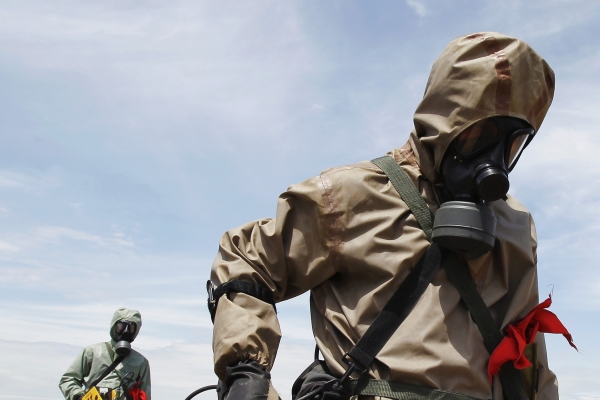Alex Constantine - February 2, 2014
"... The settlement, reached in February 2012 to resolve dozens of suits over Monsanto’s disposal of dioxin waste at a now-defunct facility in Nitro, W.Va., includes a $21 million fund that will pay for the medical testing of eligible Nitro community class members, which include thousands of people who lived, worked or attended school in the Nitro area during the period covered by the suit. ..."
Law360, New York (January 27, 2014, 5:37 PM ET) -- Objectors to Monsanto Co.'s $93 million deal with West Virginia residents alleging medical harm and property damage from Agent Orange herbicide produced at a nearby plant have turned to the U.S. Supreme Court after the state high court rejected their intraclass conflict claims.
But the decision contradicted instructions from the Supreme Court in its 1997 Anchem Products Inc. v. Windsor decision and elsewhere that subgroups with adverse interests cannot be bound by common counsel to an unfavorable settlement, according to the objectors’ Jan. 21 petition for writ of certiorari.
“The West Virginia Supreme Court failed to recognize that two subclasses were created when the settlement was negotiated that give certain class members benefits while denying any benefits to other class members and that there was a conflict between the representation of these two subclasses,” the petition said.
The settlement, reached in February 2012 to resolve dozens of suits over Monsanto’s disposal of dioxin waste at a now-defunct facility in Nitro, W.Va., includes a $21 million fund that will pay for the medical testing of eligible Nitro community class members, which include thousands of people who lived, worked or attended school in the Nitro area during the period covered by the suit.
On top of that fund, up to $63 million in additional funding will be available over the course of the 30-year medical-monitoring program, while a separate, $9 million fund will be put toward professional cleaning of about 4,500 eligible homes out of 12,000 in total within a five-mile radius of the plant, court records show. Monsanto also agreed to make a separate $29.5 million payment in attorneys' fees and costs.
The lower courts all found the settlement permissible because all claimants were subjected to the same qualifying criteria for receiving payments. In their petition, the five petitioners led by Virdie Allen argued that the settlement was only evaluated for fairness, while their arguments regarding intraclass conflicts were given short shrift.
The conflict was triggered when it became clear that a “distinct subclass” of both the medical and property classes would receive no benefits “based on an arbitrary line” drawn between class counsel and Monsanto, the petition said.
“By representing both subclasses, class counsel and the class representatives in the present case were able to trade off the rights of the group that would receive no benefit to promote the interests of those who will receive a benefit under the settlement,” the petition said.
The petition also took issue with the trial court’s decision to recertify the property class for settlement purposes after having decertified it due to concerns over expert witness methodology, saying that under class certification guidelines the adequacy of the settlement class, including its representation, required a fresh take once the deal was struck.
“A new class certification analysis was required for the property remediation class in order to assure that the two subclasses ‘each independently satisf[ied] all prerequisites of Rules 23(a) and (b),’” the petition said.
A parallel lawsuit has been proceeding since 2009 in New York federal court and in 2011 survived a partial summary judgment bid based on Monsanto's attempt to dodge liability under its status as a government contractor. Court records filed in early January indicate that the case has settled but that any deal is contingent on final approval of the West Virginia case.
The petitioners are represented by Thomas F. Urban II of the Law Firm of Urban & Falk PLLC.
The case is Virdie Allen et al. v. Monsanto Co. et al., case number 13-887, in the U.S. Supreme Court.
--Additional reporting by Sean McLernon and Maria Chutchian. Editing by Elizabeth Bowen.
Related Articles
Latest in Appellate
- 5th Circ. Sets Arbitration Rules In Conoco Win Over Union
- Chevron Wants Del. High Court's Final Stamp On Forum Bylaw
- Texas Court Trims Cop's Defamation Suit Against Union
- High Court Urged To Review Medical Whistleblower Protection
- 9th Circ. Hands Win To Ecuador In Chevron Discovery Fight
http://www.law360.com/appellate/articles/504375/monsanto-agent-orange-deal-faces-high-court-challenge







